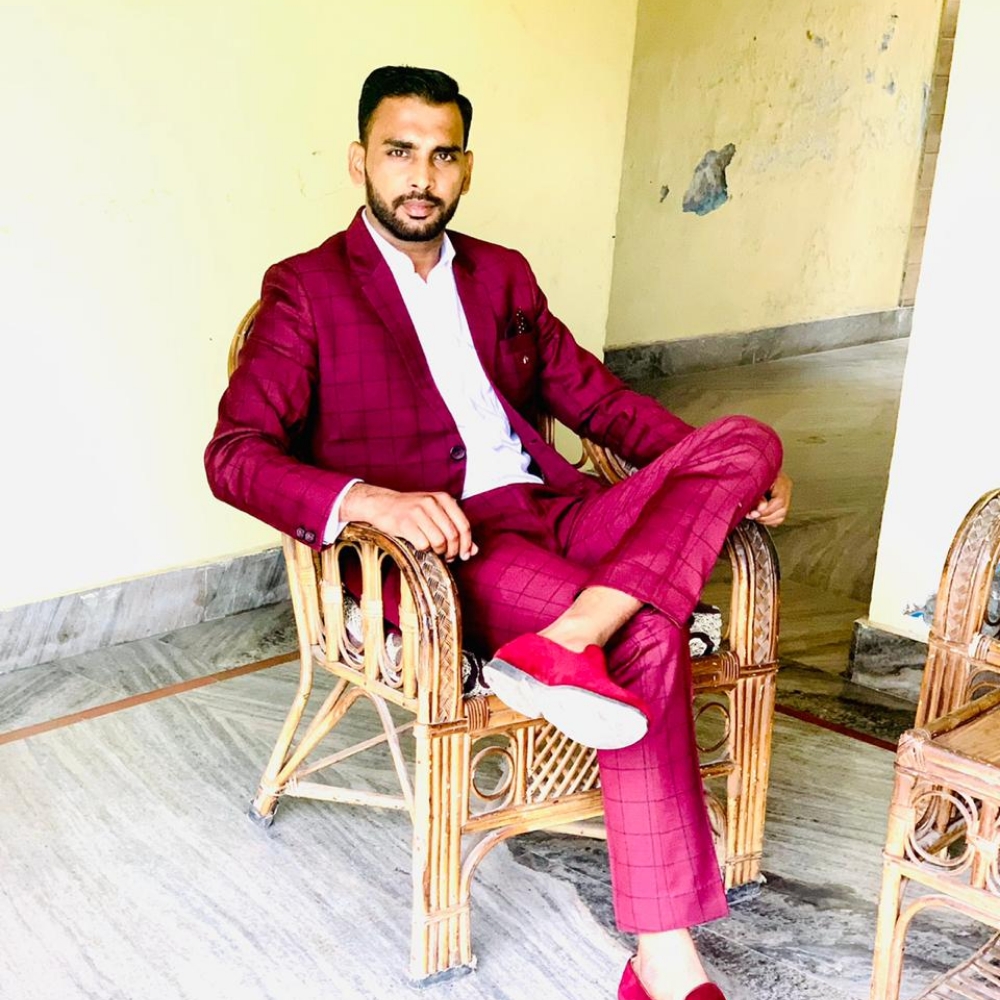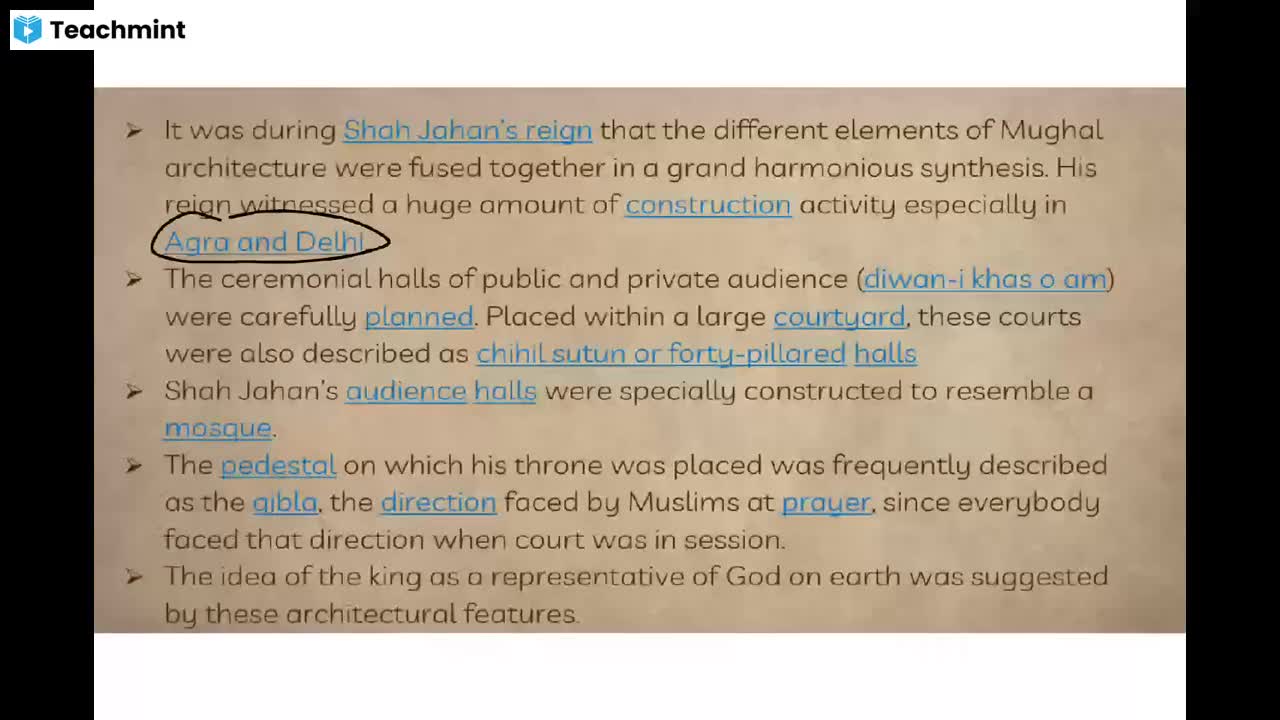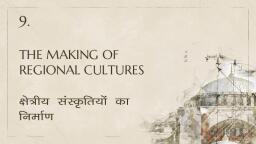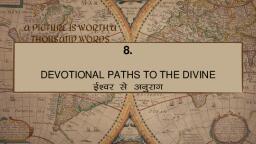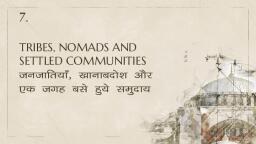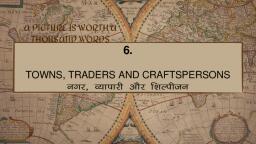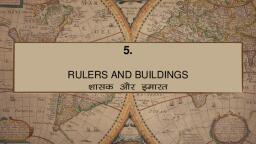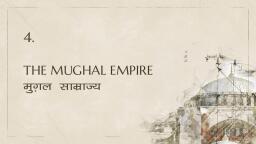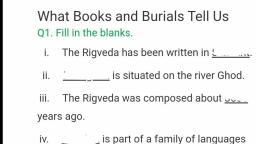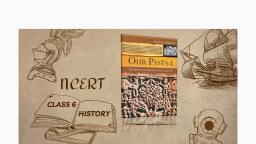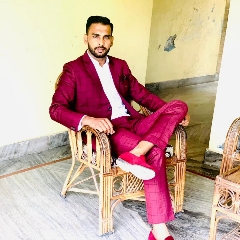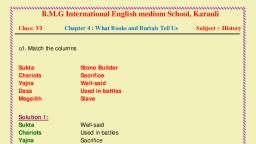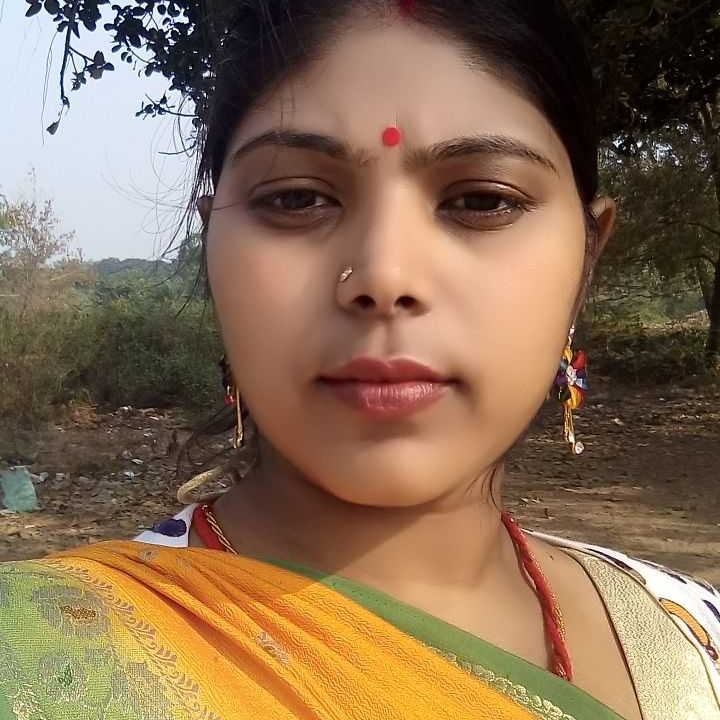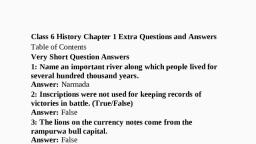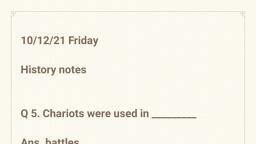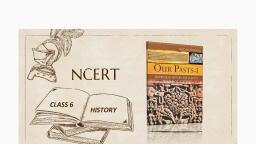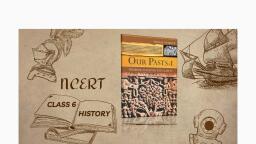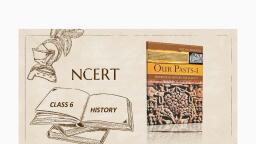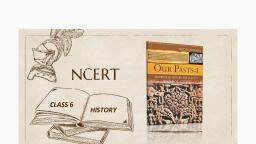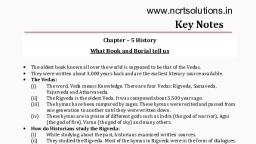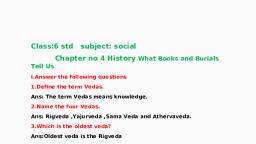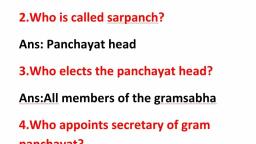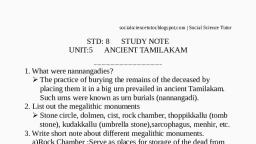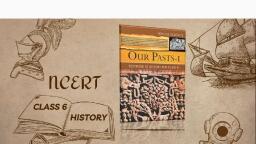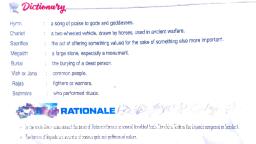Page 2 :
A PICTURE IS WORTH A, THOUSAND WORDS, , 4., , WHAT BOOKS AND, BURIALS TELL US
Page 3 :
OVERVIEW ?, 1., 2., 3., 4., 5., , One of the oldest books in the world ., How historians study the Rigveda !, Cattle, horses and chariots., Silent sentinels—the story of the megaliths, Burials and Inamgaon
Page 4 :
ONE OF THE OLDEST BOOKS IN THE WORLD :, ● VEDAS, ● There are FOUR of them –, , the Rigveda, Samaveda, Yajurveda and Atharvaveda., ● The oldest Veda is the Rigveda, composed about 3500 years ago., includes more than a thousand hymns, called sukta or “well-said”., These hymns are in praise of various gods and goddesses., ● Three gods are especially important:\, Agni, the GOD OF FIRE;, Indra, a WARRIOR GOD; and, Soma, a plant from which a SPECIAL DRINK was prepared
Page 5 :
RIGVEDA :● Hymns were composed by sages (rishis). Priests, , taught students to recite and memorise each, syllable, word, and sentence, bit by bit, ● A few were composed by women. The Rigveda is, in old or Vedic Sanskrit, ● The Rigveda was recited and heard rather than, read. It was written down several centuries after, it was first composed, and printed less than 200, years ago.
Page 6 :
SANSKRIT :● Sanskrit is part of a family of languages known as Indo-European., ● Some Indian languages such as Assamese, Gujarati, Hindi, Kashmiri and, , Sindhi; Asian languages such as Persian and many European languages, such as English, French, German, Greek, Italian and Spanish belong to this, family., ● They are called a family because they originally had words in common., Take the words ‘matr’ (Sanskrit), ‘ma’ (Hindi) and ‘mother’ (English), ● North-east belong to the Tibeto-Burman family;, ● Tamil, Telugu, Kannada and Malayalam belong to the Dravidian family;, ● languages spoken in Jharkhand and parts of central India belong to the, , Austro-Asiatic family
Page 7 :
HOW HISTORIANS STUDY THE RIGVEDA : Historians, like archaeologists, find out about the past, but, in addition, , to material remains, they examine written sources as well., Some of the hymns in the Rigveda are in the form of dialogues., E.G , a dialogue between a sage named, , Vishvamitra, and two rivers, (Beas and Sutlej) that, were worshipped as goddesses.
Page 8 :
CATTLE, HORSES AND CHARIOTS : There are many prayers in the Rigveda for cattle, children (especially, , sons), and horses., Horses were yoked to chariots that were used in battles, which were, , fought to capture cattle. (for land, which was important for pasture, and, for growing hardy crops that ripened quickly, such as barley. )(for, water, and to capture people.), Some of the wealth that was obtained was kept by the leaders, some, , was given to the priests and the rest was distributed amongst the, people.
Page 9 :
Some wealth was used for the performance, of yajnas or sacrifices in which offerings, were made into the fire. These were meant, for gods and goddesses. Offerings could, include ghee, grain, and in some cases,, animals.
Page 10 :
WORDS TO DESCRIBE PEOPLE : Some of the words used to describe people found in the Rigveda., There are two groups who are described in terms of their work —, , the PRIESTS, sometimes called brahmins, who performed various rituals,, the RAJAS.( these rajas were not like the ones you will be learning about, later. They did not have capital cities, palaces or armies, nor did they collect, taxes )., Two words were used to describe the people or the community as a whole., One was the word JANA, which we still use in Hindi and other languages., The other was VISH. The word vaishya comes from vish
Page 11 :
Sometimes, the people who composed the hymns described themselves as, , ARYAS and called their opponents Dasas or Dasyus., DASAS :- These were people who did not perform sacrifices, and, , probably spoke different languages., Later, the term dasa (and the feminine dasi) came to mean slave. Slaves, , were women and men who were often captured in war. They were treated, as the property of their owners, who could make them do whatever work, they wanted .
Page 12 :
SILENT SENTINELS—THE STORY OF THE MEGALITHS : These stone boulders are known as megaliths, , (literally big stones)., These were carefully arranged by people, and, , were used to mark burial sites., The practice of erecting megaliths began, , about 3000 years ago,, prevalent throughout the Deccan, south India,, , in the north-east and Kashmir.
Page 13 :
SILENT SENTINELS—THE STORY OF THE MEGALITHS : While some megaliths can be seen on the surface,, other megalithic burials are often underground., Sometimes, archaeologists find a circle of stone boulders, or a single large stone standing on the ground., These are the only indications that there, , are burials beneath.
Page 14 :
The dead were buried with distinctive pots, which are, , called Black and Red Ware. ( COMMON FEATURES :also found are tools and weapons of iron and, sometimes, skeletons of horses, horse equipment and, ornaments of stone and gold )., , This type of megalith is known as a CIST. Some, cists, like the one shown here, have port-holes, which could be used as an entrance.
Page 15 :
FINDING OUT ABOUT SOCIAL DIFFERENCES: Sometimes, more objects are found in one grave, , than in another ., E.G. Brahmagiri, HERE one skeleton was buried with 33 gold beads,, , 2 stone beads, 4 copper bangles, and one conch shell., Other skeletons have only a few pots., These finds suggest that there was some difference, in status amongst the people who were buried. Some, were rich, others poor, some chiefs, others followers
Page 16 :
WERE SOME BURIAL SPOTS MEANT FOR CERTAIN FAMILIES ?, Sometimes, megaliths contain more than one skeleton., These indicate that people, perhaps belonging to the same family, were, , buried in the same place though not at the same time., The bodies of those who died later were brought into the grave through, the portholes., Stone circles or boulders placed on the surface, probably served as signposts to find the burial, site, so that people could return to the same, place whenever they wanted to .
Page 17 :
BURIAL AT INAMGAON, Site on the river Ghod, a tributary of the Bhima., It was occupied between 3600 and 2700 years ago., Here, adults were generally buried in the ground,, , laid out straight, with the head towards the north., Sometimes burials were within the houses., Vessels that probably contained food and water, were placed with the dead., One man was found buried in a large, four legged, clay jar in the courtyard of a five-roomed house (one, of the largest houses at the site), in the centre of the, settlement. This house also had a granary. The body, was placed in a crosslegged position.
Page 18 :
OCCUPATION AT INAMGAON, Found seeds of wheat, barley, rice, pulses, millets, peas and sesame., Bones of a number of animals, many bearing cut marks that show they, , may have been used as food, have also been found., These include cattle, buffalo, goat, sheep, dog, horse, ass, pig, sambhar,, spotted deer, blackbuck, antelope, hare, and mongoose, besides birds,, crocodile, turtle, crab and fish., There is evidence that fruits such as ber, amla, jamun, dates and a variety, , of berries were collected.
Page 19 :
Famous physician named CHARAKA, who wrote a book on medicine known as the, Charaka Samhita., There he states that the human body has 360, bones. This is a much larger number than the, 200 bones that are recognised in modern, anatomy., Charaka arrived at this figure by counting the, teeth, joints and cartilage
Page 20 :
CHINA, Around 3500 years ago, we find some of the first evidence of writing in, , China. These writings were on animal bones. These are called oracle bones,, because they were used to predict the future., Kings got scribes to write questions on the bones —The bones were then, put into the fire, and they cracked because of the heat. Then fortunetellers, studied these cracks, and tried to predict the future. As you may expect,, they sometimes made mistakes., These kings lived in palaces in cities ,, they did not know the use of iron
Page 21 :
TAKEAWAYS, MATCH THE FOLLOWING :-, , Sukta, Chariots, Yajna, Dasa, Megalith, , Stone boulder, Sacrifice, Well-said, Used in battles, Slave
Page 22 :
THANKS !
